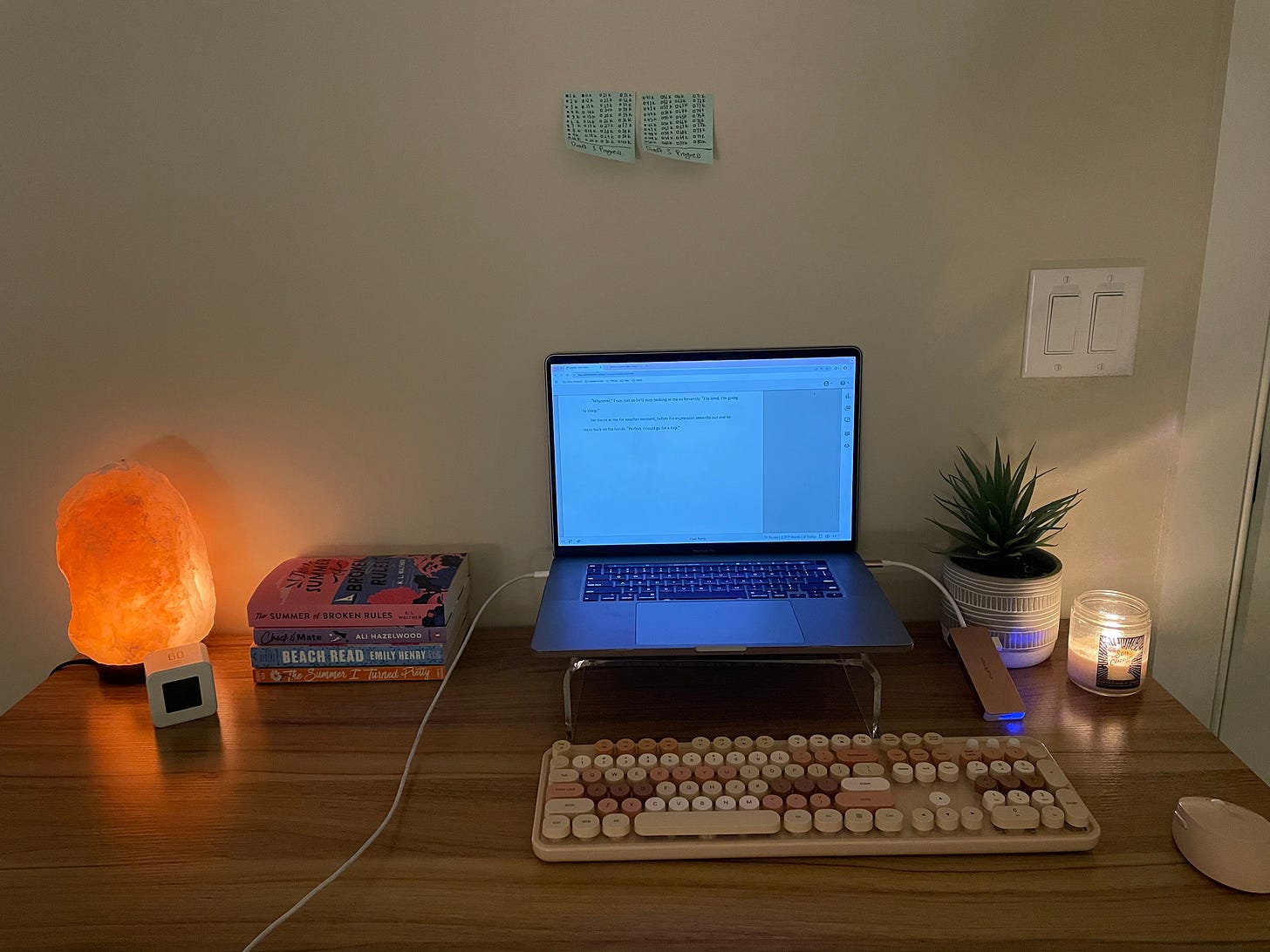Creating a Chaptered Outline For My Book Revisions
Why I created a chaptered outline and what I included in it
Why Create a Chaptered Outline?
If you don’t know what a chaptered outline is, essentially it’s a brief overview of what each chapter is about. Some writers who like to plot intensely will create a chaptered outline before they even begin their first draft, while others like to make one for the revision stages.
I created a chaptered outline after my first and second drafts so that I could see what was included in each draft from a bird’s eye view. It helped me see how the plot progressed throughout the story, as well as how the characters developed and at what rate. It also made me realize what scenes needed to be added or deleted, as I could see what was/wasn’t moving the plot and characters forward.
Another way that I was planning to use my chaptered outline to guide my revisions was to compare it to another book’s chaptered outline (although I didn’t end up doing this). I was going to use Check & Mate by Ali Hazelwood, as it has similar relationship dynamics and character arcs as my book. I wanted to compare the two outlines to make sure that the pacing of my plot/characters was similar to another book in the same genre.
Subscribe for more inside looks into my writing process!
What I Included In My Chaptered Outline
Before starting my third draft back in the fall, I created a new chaptered outline to encapsulate what occurred in my second draft. But this time, instead of solely writing down what happened in each chapter, I expanded it to focus on several different things.
Plot
After reading each chapter, the first thing I jotted down was the main plot points. I didn’t want to include every little thing that happened, as that would defeat the purpose of an outline and I may as well just read the whole chapter.
So I tried to keep it to just a few bullet points that summed up the main things in that chapter. It can be difficult to know what to include for this part, but one way to think of it is: how would you quickly describe the chapter to a friend? You can get ideas for your plot points from there.
A key thing to remember for this is to write down the plot as it actually happened in that draft, even if you know you want to change it. If you write the ideal plot you want to happen in each chapter, it defeats the whole purpose. The aim of the outline is to get a bird’s eye view of where your story is currently at so you know what needs to be fixed.
Here is a screenshot of what the plot points for one chapter in my chaptered outline looked like:
Characters
The next part that I summarized for each chapter was focused on the characters. For my third draft, I wanted to mainly focus on deepening my characters and getting them ‘right.’
So I decided to jot down what the characters were like in each chapter so I could see if they were developing at a proper pace and if they were aligned to who they actually were.
Tone:
I wanted to note what the characters’ tones were in each chapter to make sure they were reacting to things as they should. For example, I know my MMC isn’t hotheaded, so I wanted to make sure that he wasn’t overly angry or aggressive about little things that occurred.
Arc:
The other area I wanted to focus on for my characters was their arcs. I looked at the pacing of their arcs, as I didn’t want my characters to change too quickly, but I also didn’t want them to change too slowly. It’s definitely a fine balance and I’m sure other writers can relate to how difficult it is to figure out the proper pacing of character arcs.
I also wanted to make sure that their arcs actually showed up on the page. I know what all of their arcs are, but sometimes I don’t convey them properly to the reader. This became evident when I was attempting to write down how my MMC’s arc was shown in each chapter, and I realized it barely was.
I knew I needed to demonstrate more of who he was, specifically at the beginning of the book. Layering in more of his character flaws would help make his change at the end more satisfying instead of feeling like it came out of nowhere.
Here is a screenshot of what the bullet points looked like for each of my characters in my chaptered outline:
Edits
Here is where you can think about what your ideal outline for the chapter would be.
If there was something I knew needed to change in that chapter, either with my plot or my characters, I would include it here. I decided to do this for each chapter because I knew it would make it easier in the editing stages to know exactly where each change needed to go instead of just having a laundry list of edits that said vague things like ‘show MMC’s arc more in the first half.’
Which, admittedly, I still did have an editing laundry list. But writing down some more specific chapter edits did help break it up more.
For instance, I wrote in the edits for chapter 9 to include a specific conversation that showcased my MMC’s arc more. This helped give future me more detailed instructions so I wouldn’t forget to include the big overall edits throughout the book.
Here is a screenshot of what the bullet points looked like for my edits:
Do you use a chaptered outline in your writing process? Do you find them helpful or a waste of time? I’d love to know in the comments!






I've done something similar for my current WIP, mostly because I've written it on Scrivener and that's a big feature of the software. It's been so helpful as I was drafting, to help me stay on track, but now I'm starting to edit, it's invaluable! Thanks for sharing your process, I love to see how other writers work!
I started using Plottr a few years ago. I am pleased with the tool's ability to line out several plot arcs. it is nicely granular. It also has a place for characters and locations. I normally write without an outline. Outlines let me go longer, get cleverer, get twistier, and maintain continuity better. I assume its competitors are similar, but as a class of product, they carry value.